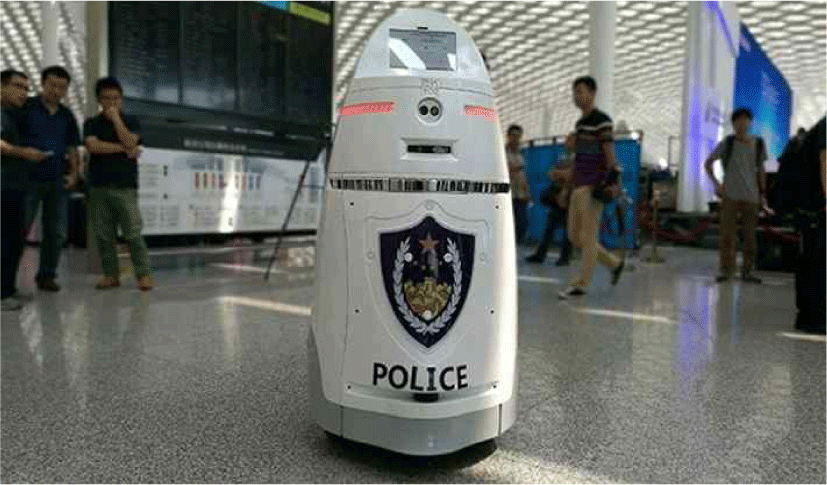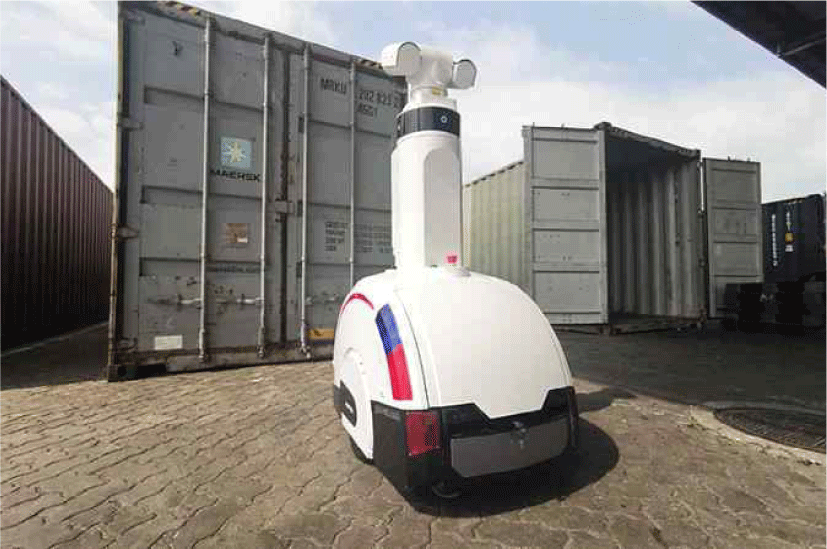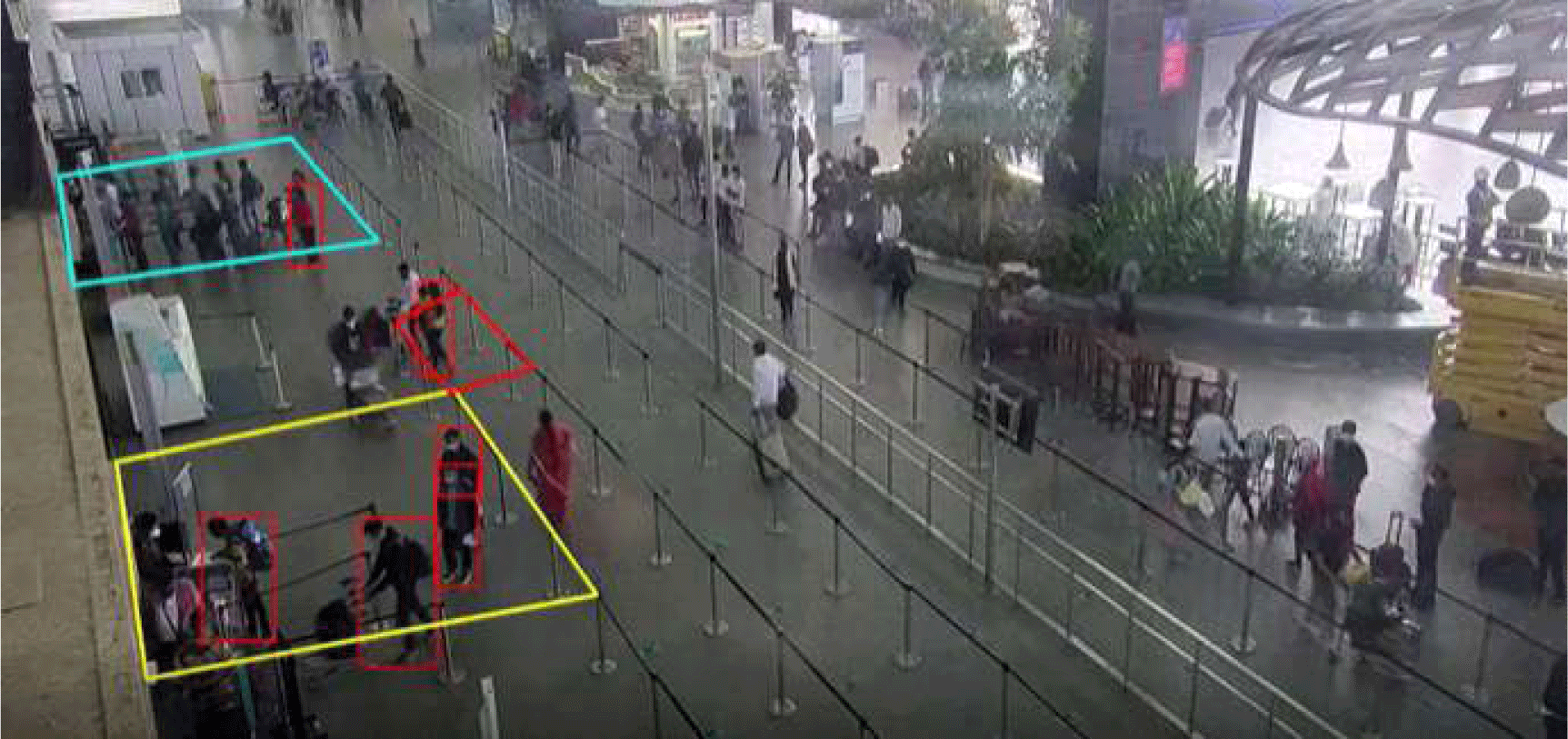I. INTRODUCTION
Digital Transformation covering Artificial Intelligence, the Internet of Things (IoT) and VR/AR/XR have enabled numerous advances in many operational sectors at airport. Smart airport security has been issued due to the growing importance of securing aviation safety after post COVID-19 mainly because of increasing number of air traffic throughout the Globe.
Smart Airport security was born to solve and cover control and management needs in airports’ safety and security areas that are increasingly seeing the problems associated with the large volume of accidents and incidents including passengers and cargo.
In such a way, researchers have been focusing on developing smart airport security technologies, which could integrate different advances in the fields of airport infrastructure, digital communication, robotics and IoT.
Aviation Security is absolutely the top priority at airports and AI plays a major role in this context. In addition, e-documents and biometric technologies are opening up new opportunities that promote fully optimized passenger screening. IATA and ACI’s smart security programs advocate improved security practices that combine enhanced security with greater airport’s operational efficiency, while delivering an improved passenger service.
Self-boarding and check-in gates using biometric data or automated border control with walk-through gates are examples of such applications. For example, Dubai International Airport makes use of a walk-through smart tunnel which allows only the Emirates airline business-ticket passengers to pass through passport control in just about 15 to 20 seconds (Fig. 1).
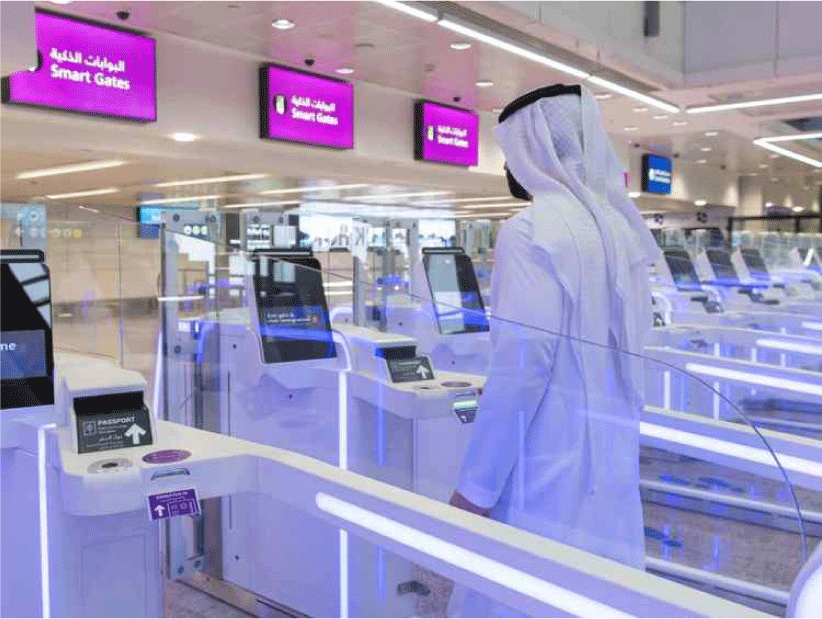
In such a context, the main purpose of this paper was to review the global trends of airport’s smart security technologies. Moreover, using the case studies of airport using smart security, this paper tried to propose the implication how the findings through the case studies may be important for airport policy and will impact the future research of airport operation.
II. CASE STUDIES FOR UTILIZING SMART AIRPORT SECURITY
UN specialized agency, ICAO (International Civil Aviation Organization) has provided a specific guideline material in GASeP from which the member states to utilize biometric information. This is because the scope and target to which the biometric information could apply are different country by country according to their legislative systems and legal environments (Dfaz, 2014).
Many states and airports are currently initiating registered passenger recognition programs designed to identify low-risk passengers and process them with expedited screening and immigration process. According to facilitated passenger programs, such biometric information as fingerprint, facial recognition and iris scan are widely used to identify and screen passengers (Kim et al., 2020).
But it is fatal weakness that nothing could be substituted once the biometric information is leaked outside. Moreover, aviation security could be breached by the use of, so called, master fingerprint which was formulated by analyzing fingerprint patterns. It is also possible to disable aviation security using forgery fingerprint made by 3D printing technology. To compensate such shortcomings, the technology to identify passengers with multiple recognition of two biometric information from fingerprint, face and iris is evolving. The failure of facial recognition or passengers could be compensated by iris scan. Iris scan improve the identity of a passenger because even identical twins have different iris patterns. Unlike face, human iris have such a unique character that has the same condition regardless of age (Khan et al., 2021).
It is expected in the future the aviation security technology with biometric information evolves from single identification to multiple identification technology which has combined application of iris, vein and others. The multiple identification technology will include the technology of identifying the passenger’s behavioral pattern as well as that of biometric information (Kasim et al., 2021; Fig. 2).
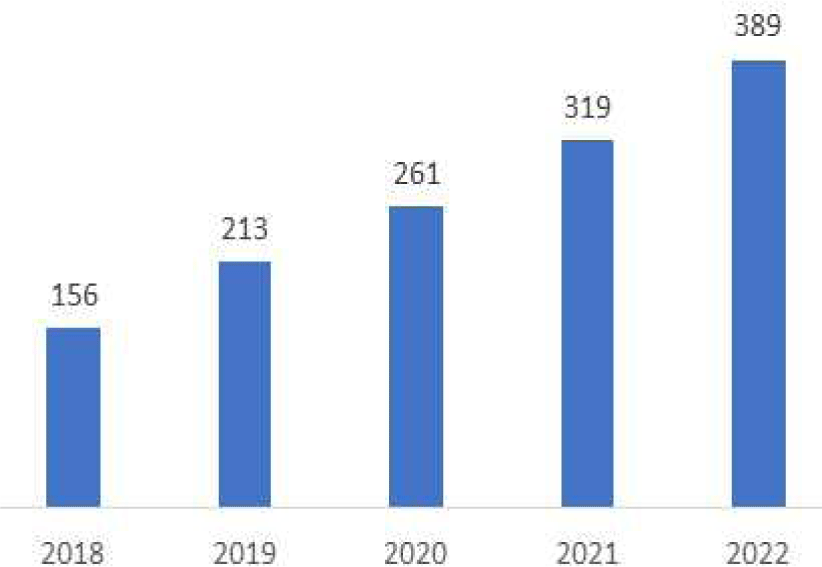
Atlanta Hartsfield-Jackson international airport, Changi international airport and etc. have used facial recognition technology for security and screening. They plan to introduce iris scan with more accuracy in the near future.
Ensuring the highest safety and security at airport is the top priority as this paper mentioned in previous chapter, especially with growing number of passengers. Major airports around the World are particularly sticking to the strict safety and security procedures, including comprehensive safety checks of its own airport or airline staff, passengers and cargo. The main goal for airlines and airports is to transport passengers safely to their destination, that is why the procedures above are necessary and even strict (Capezio et al., 2007).
Facing post COVID-19 era, the number of passengers traveling through airports continues to increase dramatically and the risks as well, the role of AI becomes even more crucial (Yangan and Mend, 2020). With A. I. based automated security systems, airport operators could effectively handle the growing passenger and cargo volume and address the associated issues. For example, aviation security robot has been operated by Shenzhen airport authority (Fig. 3).
“AnBot”, or “Shenzhen Xiaoan” in Chinese, can move around and react to emergencies with an electric riot fork. With multiple digital cameras based on A. I. system, the security robot is capable of autonomous patrols, intelligent monitoring and auto recharging. The robot could answer passengers’ questions about flight information and communicate with passengers in different contexts. In case of emergencies, AnBot can deter probable suspects with sound and light, and use tools like the electric riot fork to prevent crime or terrorism behavior (Chen, 2022).
The use of smart security robots will ease pressure on airport authority to do surveilance and security work and might save human resources and time to react the possible event which might happen inside airport (Sathyamoorthy et al., 2021).
Another example using AI based robotics is a reform measure of Guangzhou Customs of China (Fig. 4). Guangzhou Customs District has been initiating the AR and AI technologies in cargo control to enhance customs clearance efficiency at its Free Trade Zone. By means of the “AR and AI” technologies, the customs’ robot can do basic tasks such as data acquisition and comparison in advance and keep monitoring suspicious events or accidents. In addition, the Customs applied a remote collaborative system using cutting-edge 5-G based communication technology between field customs inspection and background expert instruction.
Due to the robotics, daily cargo inspection volumes at the Nansha wharf has dramatically increased from 300 to 500 containers and decreased the time for inspection of cargo.
Modern surveillance cameras at airport not only provide video data. Thanks to artificial intelligence and IoT communication, they can also analyze such passengers’ data as traffic flow (Fig. 5), their movement and extraordinary events in real time. This offers enormous potential for airport authorities as well as airlines to secure aviation safety and to improve airport service excellence (Deepa, 2018).
More than 20 billion end devices are already networked via the Internet. By 2025, there will likely be three times more than this. In addition, IoT devices are becoming increasingly smarter and more efficient than before. The reason is the outstanding progress in A.I. technologies along with hardware’s computing power (Golda et al., 2022; Alhousni et al., 2022).
Surveillance cameras (CCTV) are everywhere in airports for the aviation safety and security. CCTVs at airport are being quickly networked and equipped with high-speed intelligent IoT communication. Video analysis at airport is able to compare, in real time, video data with photos from a passenger database, in order to identify people who are wanted by the law enforcement or international organization. The applications can also analyze how quickly and in which gates people are moving to get on board, and can interpret these passenger traffic patterns based on the context (Fig. 6). This means that hazardous situations can be detected and passenger or aircraft’s safety can be secured in advance due to smart CCTVs.
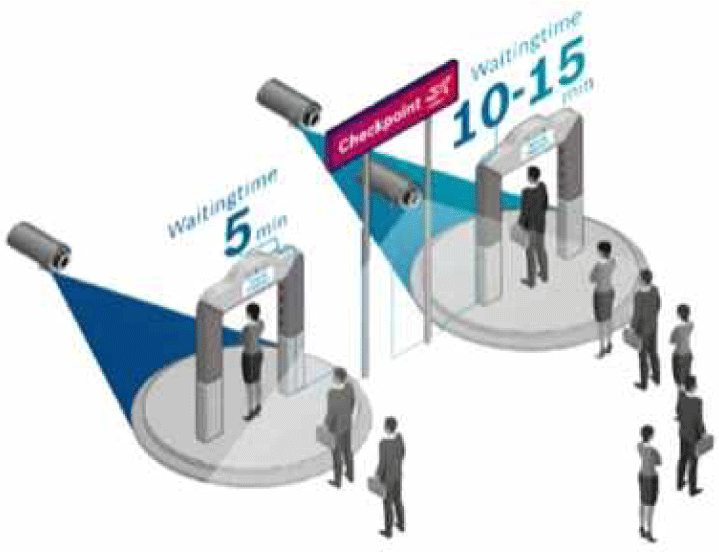
After overcoming COVID-19 pandemic era, international airports are facing the challenge of having to check in the enormous number of passengers while, at the same time, guaranteeing the high level of aviation security standard. Smart CCTV analysis with A.I. and IoT applying solutions could provide significant support for airport security.
Smart airport security cameras analyze the passenger flows and can also control these using smart displays. Passengers are kept informed through their personal mobile devices in real time about check-in counter waiting times, when their gate is opening and when they can get on board.
CCTVs with automatic facial recognition allow also airport authority to identify passengers wanted by law enforcement and therefore ensure a higher level of security which might prevent crimes or even terrorism in advance at airport (Sun, 2023).
Smart CCTV systems in airport’s air-side areas can analyze irregularities and abnormal events on the runways or taxiways. Such video analysis would inform the airport control tower and risk-management team of airport authority.
Such a new technologies would guarantee the perfect view and insight even at night orin poor weather conditions when human might miss the irregularities. By linking to other data sources such as aviation weather data, aircraft traffic data, departure and landing flight statistics), smart camera systems can create intelligent forecasts about potential disruptions which might happen (Lyu, 2022).
Smart security camera’s video analysis can be used for airport authority to detect the suspicious passengers or staff’s behavior, for example if airport staff are in the restricted areas for which they are not responsible or if passengers behave unusually. Airport Security agents will follow and keep watching the suspicious passengers throughout the entire airport in real time.
Finally the theft of luggage and other items can be detected early and prevented by airport authority. Unattended luggage can be discovered and investigated by security personnel such as EOD (Explosive Ordinance Disposal) team more quickly.
III. CONCLUSION
To sum up, this paper suggests some managerial implications based upon some of the advantages of a smart airport securities.
First of all, airport authority would expect improved airport safety and security efficiency, making use of data collected in real time.
Secondly, smart airport security technologies could reduce operating costs by saving time, equipment and human resources, improving productivity in security guard and patrol service operations at airport.
Thirdly, thanks to the enhanced surveillance camera and security checks through biometric monitoring systems, airport authority could prevent accident or incident in advance and achieve greater reliability in security operation at airport terminal.
Fourthly, due to greater control of passenger flows and automation of immigration and entry controls, airport authority could optimize its operation resulting in lower occurrence of security events.
Finally, airport authority could provide passengers with improved service quality experience by securing passengers’ safety and security during the whole process of boarding.

